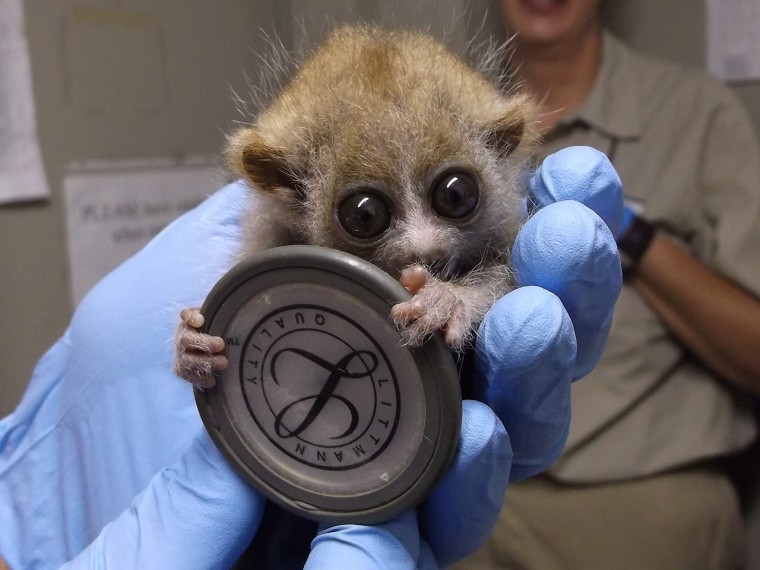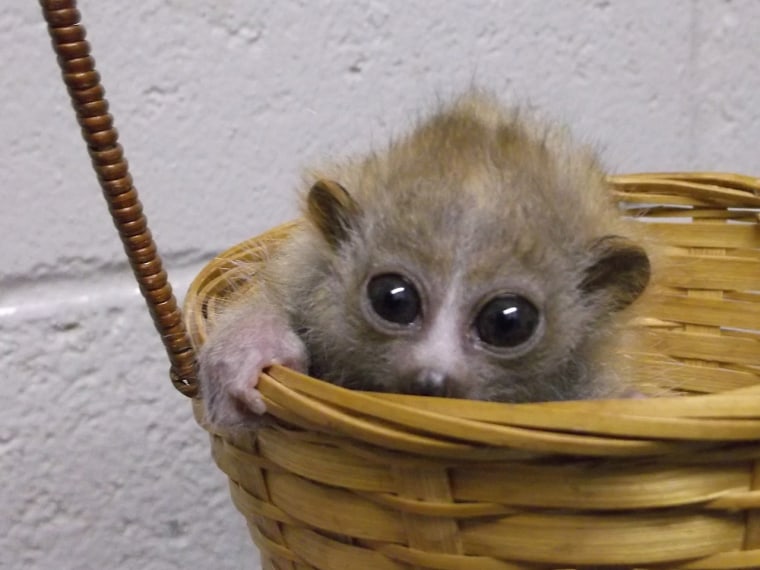
These tiny residents of the El Paso Zoo will have you seeing double.
The zoo has announced the arrival of a pair of twin slow lorises, born on April 26, and recently released a handful of photos of the animals that are almost too cute (and strange) to bear.

The babies, one male and one female, weighed roughly the amount of two tablespoons of white sugar when they were born, according to the zoo.
"We are excited about our first birth of pygmy slow lorises at the zoo, especially because they are twins," Zoo Collections Supervisor Griselda Martinez said in a press release. "It's evident that through our staff's hard work and dedication, this has been a successful birth."

The babies are a key part of attempts to protect the species: The zoo says their births are "part of a breeding recommendation...to aid in the species' conservation." The pygmy slow loris is currently listed as "vulnerable" on a list of threatened species.
Zoo visitors eager to check out the babies should soak up these pictures, because it might be hard to grab a peek in person. "Visitors may have a hard time seeing them in their exhibit because they are nocturnal animals and they may be sleeping in clinging to mom, in their hammock, deep baskets or nest boxes," the zoo said.